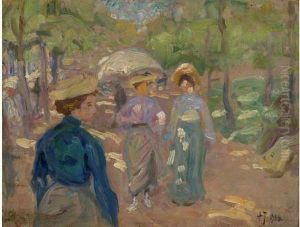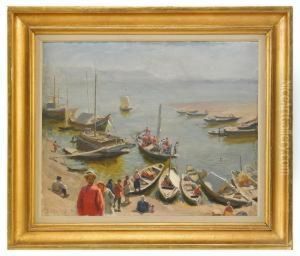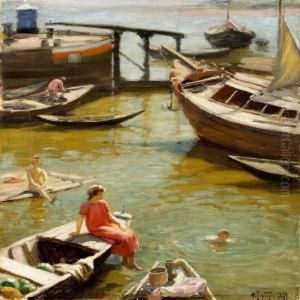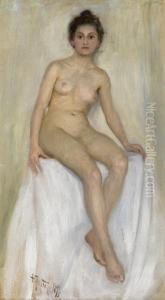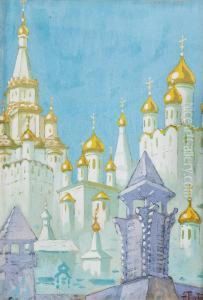Fedor Ivanovich Rerberg Paintings
Fedor Ivanovich Rerberg was a Russian painter and stage designer, associated with the Russian Symbolism and Art Nouveau movements. Born on December 10, 1865, in Moscow, Rerberg came from a family with German and Baltic roots. He was initially educated at the Moscow Technical School, but his passion for art led him to pursue a career in painting.
Rerberg's artistic journey took a significant turn when he joined the Moscow School of Painting, Sculpture and Architecture. There, he studied under notable artists such as Illarion Pryanishnikov and Vladimir Makovsky, both of whom played a considerable role in shaping his early style. His work from this period reflects a strong academic foundation, but over time, Rerberg developed a more distinctive approach that incorporated elements of Impressionism and Symbolism.
In the early 20th century, Rerberg's career expanded beyond painting as he became involved in theater. He worked as a stage designer, collaborating with influential figures in Russian theater such as Konstantin Stanislavski and Alexander Tairov. His set and costume designs were known for their innovative use of space and color, contributing to the evolving aesthetics of Russian stagecraft at the time.
Rerberg was also a member of the 'Blue Rose' art group, a collective of symbolist artists who were instrumental in the development of Russian modernism. The group's exhibitions, held in the early 1900s, showcased works that emphasized mysticism, fantasy, and the use of metaphorical imagery. Rerberg's paintings from this period often featured dreamlike scenes and a soft, nuanced color palette that captured the Symbolist fascination with the ethereal and the otherworldly.
Despite his accomplishments, Rerberg's life was not without challenges. The political upheavals and social changes brought about by the Russian Revolution in 1917 had a considerable impact on his career. The shifting cultural landscape forced many artists to adapt or face obscurity. Rerberg, however, managed to continue working, although the later years of his life are less documented than his earlier, more fruitful periods.
Fedor Rerberg died on February 15, 1938, in Moscow. While he may not be as widely recognized as some of his contemporaries, Rerberg's contributions to Russian art and theater have earned him a respected place in the history of Russian culture. His works are preserved in various Russian museums, where they continue to be studied and appreciated for their artistic significance.
